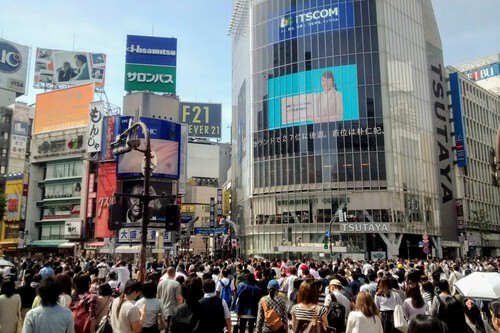It happened recently during the Easter holiday. Venice reinstated its pioneering tourism toll from years past. The results had been so encouraging that the city doubled the entrance fee—a move aimed at restoring the balance between the rights of residents and the surge of visitors. Now, an entire nation has followed the popular city: Japan.
Mass tourism and the tax burden. As Japan continues to welcome more tourists, a growing number of municipalities have started looking to examples like Venice, introducing specific taxes for foreign visitors in an effort to offset the mounting costs that tourism imposes on local communities.
According to Nikkei Asia, these measures primarily include per-night accommodation taxes but are also expanding into more innovative forms of taxation designed to exempt local residents. Inspired by the “causer pays” principle, the goal is clear: preserve the fiscal viability of cities facing reverse demographic pressures—declining populations and booming tourism—while maintaining essential public services without burdening permanent residents.
Accommodation tax. Since Tokyo pioneered a flat lodging tax per person, per night, 11 other municipalities have followed. Most recently, Atami in Shizuoka Prefecture began charging a $1.4-per-night tax on April 1. That levy is expected to generate about $4 million yen annually and will fund the new Atami Tourism Bureau and local events like fireworks festivals.
Most cities have adopted flat fees, scaled by accommodation price, to simplify collection and reduce the administrative burden on hotels and hosts. However, Kutchan in Hokkaido stands out: Since 2019, it has imposed a 2% tax on accommodation costs in its resort area—a pioneering model that other municipalities, such as Rusutsu, are considering replicating.
Miyajima and the model. One of the most significant developments is the new tax applied by Hatsukaichi to access Miyajima Island. Since October 2023, each ferry passenger has paid almost an extra dollar. Inspired also by the “causer pays” concept, the policy makes visitors—not residents—cover costs related to waste management, traffic, and water and sewage services.
Unlike tourism-specific taxes, this is a general levy that can be allocated to any part of the local budget. With a population of just 1,400 and 4.85 million visitors in 2024, Miyajima illustrates how mass tourism can overwhelm a heritage site’s capacity without proper controls.
Biei: combined taxes. Another example is Biei, also in Hokkaido, which proposed a dual tax to mitigate tourism’s impact: a $1.4 nightly accommodation fee and a parking charge at Shirogane Park, one of its top attractions.
In 2023, Biei received 2.39 million visitors but recorded only 158,000 overnight stays. Since most tourists are day-trippers, a mixed tax model ensures broader contribution. Together, the two measures are expected to generate more than $1.6 million annually, which will fund public services and support agricultural policies to strengthen the local economy.
Challenges and risks. As prefectures and municipalities adopt their own versions of these taxes, new challenges are emerging—such as the risk of double taxation where regional and local levies overlap. Additionally, because revenue depends on the density of accommodation facilities, areas with more short-term visitors may be disadvantaged, deepening territorial inequalities.
The solution? Some local governments, like Sado in Niigata Prefecture, have proposed alternatives such as general island entry fees. These would simplify collection and distribute the tax burden more equitably among all types of visitors.
A local response to a global phenomenon. Ultimately, the wave of tourist taxes reflects a global paradox: World-famous destinations are watching their resident populations shrink while their services buckle under the pressure of visitors once considered vital to local economies.
As Muneaki Aoki, a professor at Kanagawa University and adviser to the Miyajima and Biei tax systems, told Nikkei, the “causer pays” model fits best in places where tourists vastly outnumber locals. In treating tourism as both an opportunity and a strain, these systems offer a pragmatic solution: preserve hospitality without compromising fiscal stability or local quality of life.
In that sense, Japan—with its methodical, rules-driven approach—is emerging as a rare example of policy innovation, transforming from a follower of destinations like Venice to a pioneer in its own right.
Image | Marco Montero Pisani (Unsplash)



